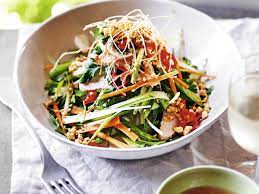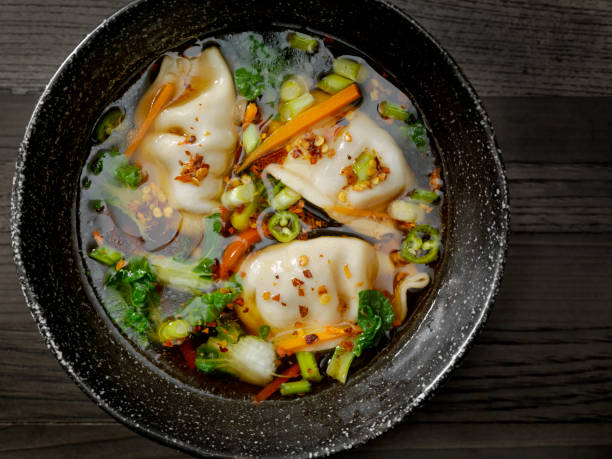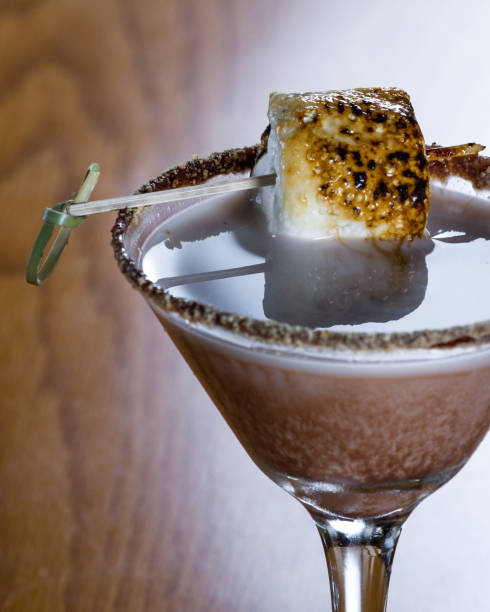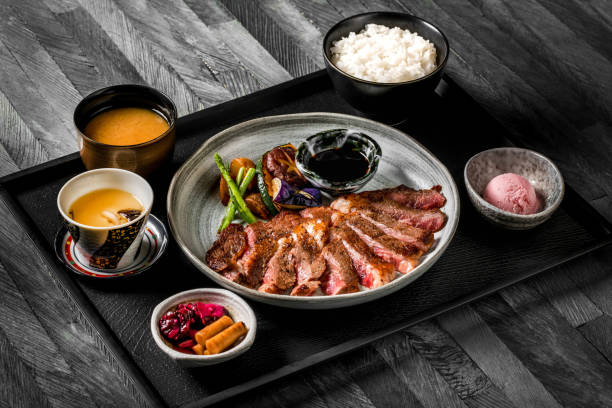A Thai meal is incomplete without salads. Salads were a staple of Thai cuisine growing up. We don’t want to eat our vegetables, but we love salads! Most of our salads contain a lot of protein and very few vegetables. Salads are often served because they are the “fresh” part of a balanced Thai meal. If you wish to enjoy a Thai meal Thai, you must learn about our salads.
There are many Thai salads. However, you can generally group them into four categories: Yam (tam), laab (PLA), and pla. Although these salads have many similarities, each has unique characteristics, particularly cooking techniques. You’ll be able to easily make any of the four types of salads once you know the basics.
Since I have been teaching Thai cuisine for more than 12 years, my philosophy is to look beyond the recipes to see the larger picture and understand the overarching themes. That’s how you truly “get” a dish.
The Four Key Ingredients in Thai Salad Dressings
Let’s start with the dressing before we get into the main four styles of Thai salads. It’s an ingredient that is shared between the different categories. Thai salad dressings often use the same main ingredients. This is not a complete list. These are not the main ingredients in most dressings.
Fish sauce It’s hard to imagine a Thai dish without fish sauce. It is the main seasoning ingredient that adds saltiness to the dish. It is important to use high-quality fish sauce, such as Red Boat, Squid or Three Crabs.
Lime juice Unlike Western vinaigrettes or dressings that use many tablespoons of vinegar and acid to give acidity, Thai salads only use fresh lime juice as their main source of sourness. Some salads may add tamarind paste to the lime juice for extra pucker. But that’s it.
Sugar: With a few exceptions to the rule, most Thai salads have added sugar to balance the acidity and salinity of the dressing. However, granulated white sugar (or palm sugar) is common. Nam pro is a sweet and savory Thai chili jam that gives salads a sweetness with more depth of flavor.
Chilis: Thai Salads can be mildly spicy or very hot. However, all Thai salads contain at least some heat from chile. You can use fresh or dried chiles, which deliver a strong capsaicin bite, or a slower-building background heat, depending on what type of salad you choose.
Four Categories of Thai Salads
Although there are no words that translate Thai as “salad”, we have several words that describe dishes made by mixing ingredients with a dressing (like lettuce). These are the main types of Thai salads. They cover most Thai salads, whether they’re in Thailand or elsewhere. Anything not listed here is a lesser-known dish or regionally unique one.
Yam
Yam almost any ingredient can be mixed with this dressing. Traditional yams have protein as their main ingredient. They are often paired with crunchy vegetables such as onions or Chinese celery to balance them. To give a yam a bright, shiny finish, fresh herbs such as cilantro or scallions can be added.
Yam examples
Yam Khai Dao is a yam where fried eggs are the primary source of protein.
Yam Won Sen: A yam with glass noodles, poached pork and poached shrimp.
How to make Yam
- Prepare the dressing. Using a mortar and pestle, pound fresh chiles into a paste. Add the palm sugar to the mortar and pound it until it is incorporated into the paste. Mix the remaining liquid ingredients, such as fish sauce and lime juice, until the palm sugar has dissolved completely.
- Prepare any ingredients that need to be cooked. Once you have made the dressing, you can start cooking.
- Mix, garnish, and serve. If the salad lacks crunch, you can add roasted peanuts and cashews to it.
Not a mortar and pestle? Finely chop the chiles and mix everything. However, if you use palm sugar, you will need to ensure that it is finely chopped and sufficiently dissolved in the dressing.
Tam
Tam-style salads can be found in Thai and Lao cuisines. Som Tam, which is a combination of the words for sour (som) as well as the term for pounding with a mortar (“tam”), has come to be synonymous with green papaya, the most popular tam-style salad. There are many variations of this theme, including cucumber and corn.
Unlike other types, Tam is the only type of salad that doesn’t use protein as the main ingredient. Shredded green papaya is the most common som tam component, while long beans and tomatoes play supporting roles in many tam-style salads. Other commonly used ingredients include cucumber, corn, Thai eggplant and rice noodles. But, anything goes, even fruits like apples. Other “flourishes”, which you will see often, include roasted peanuts and dried shrimp.
Examples of Tam
Som Tam Thai – The most well-known tam in all of Asia.
Tam Khao Pod Kai Kem – A tam with fresh sweet corn and cured duck eggs.
Basic Method of Making Tam
- Chop aromatics and difficult-to-break down ingredients. Next, add palm sugar and dried shrimp. These should be mashed until the shrimp have been slightly broken down and the palm sugar has dissolved. You can also add roasted nuts to the salad by pounding them until they are broken down.
- Add in the bruising vegetables and pound them. Long beans and tomatoes can be mashed until they become brittle and release their juices. The goal is to mash the ingredients and not make a paste.
- Add liquids to the bowl and mix well. Fish sauce, lime juice and tamarind can be added to the dressing. To dissolve the palm sugar, use the pestle to stir. Make sure the dressing is well incorporated.
- Add other vegetables to the salad and serve. Add the remaining vegetables to the salad and toss it with the dressing. You may not need to pound the tam you have. All that is left is to stir with a large spoon and mix. If you are using corn and prefer to have it chopped rather than in individual kernels, or if you are incorporating apples into the recipe, you won’t need to pound. You can use a mortar to pound firmer ingredients like cabbage or shredded green papaya lightly. Then, mix everything with a large spoon until it is slightly wilted. You want to keep the fresh crunch of the ingredients, so don’t over-pound them. To ensure that the salad doesn’t get soggy from the dressing, serve it immediately.
Nam Tok and Laab
It’s lamb, not laRRRRb. You may be wondering if lamb or larb is the same thing. There are many transliterations for the word lamb. However, larb or lamp offers better translations of the Thai pronunciation. The “ar” sound in English is the closest to the Thai pronunciation.
Lab typically has meat as its main ingredient. Chicken, pork, beef and duck are also good choices. The origins of laab are a “whole-animal” preparation that used whatever was available. This explains why there are so many herbs and chiles in the salad. They help to mask any gaminess from the meat. This is why you will often see the appropriate offal in Thailand. For example, pork larb with pork liver and intestine. The skin may also be added to the minced pork shoulder. The modern lab is much simpler because we can now choose the animal part that we like from the shop!
Example of Lab
Laab Moo Isan – A lamb with minced, poached pork as its main ingredient.
Basic Method of Making Lab
- Prepare the meat. A lab can be made in one pot. In a small saucepan, heat the meat with a little water. Continue to stir the meat until it is cooked through. The meat mustn’t be brown. The goal is to retain its moisture.
- Season the meat with aromatics and spices off-heat. Next, heat the saucepan and add the fish sauce, lime juice and ground dried chilies. The liquid released during cooking creates a dressing that is easily absorbed by still-warm meat. You can add aromatics such as lemongrass, shallot, and makrut-lime leaves to this dressing. The residual heat from the saucepan allows them to retain their texture and aroma without losing any of their sharp edges.
- Let the mixture cool slightly before adding delicate herbs and Khao-Khun. Stir in fresh herbs that may wilt or bruise if exposed to high heat. You can add stronger herbs such as cilantro and scallions to the mixture while still warm but not too hot. Mint is the most important fresh herb to laab. If it is not added to the mixture right before it is served, it can bruise, turn bitter and become blackened if it is left to marinate in acidic dressing along with the warm meat. Lamb can be served warm or at room temperature. This allows you to finish the rest of your meal while you wait. It would be best to wait until the end to add the Khao-Khun. The toasted-rice flour thickens the dressing and adds a pleasant crunch to your salad. However, if it is not stirred properly, it can soak up the dressing and make it gloopy. Before adding the Khao-khua or mint to your dish, make sure that all other ingredients, such as the sticky rice, are ready.
The process for making nam tok is the same, except that you need to cook the meat. Grill and then slice thinly any meat, such as flank steak, skirt steak, pork jowl, or hanger steak, before dressing the slices.
Play
Over time, the way pla salads are prepared has changed. Play-style salads used thinly-sliced seafood or beef that had been “cooked” in lime juice. Then, the ingredients were tossed with fresh herbs, chiles and a dressing. This practice is now very rare. The meat or seafood is either partially or fully cooked before mixed with the acidic dressing.
Play is a light-cooked combination of shrimp, beef, and fish. The combination of lime juice, sugar and fish sauce makes the dressing similar to a standard for yams. However, Thai chile paste and dried roasted chili flakes can be added to extra heat. You give the protein time to marinate in the dressing. Also, add ingredients such as sliced lemongrass, mint and other fresh Thai herbs.
Basic Method of Making Pla
- Traditional pla. Marinate thinly sliced raw protein with lime juice. Lightly cook the protein for new-school play. Use thinly sliced fish, shrimp, and beef if you prefer old-school play. Let the protein sit in lime juice for five minutes before adding the fish sauce, chiles and sugar to the dressing.
- A more modern and cooked version of the dish. Choose the cooking method that best suits your protein. Poaching and grilling are excellent options for shrimp. Pan-searing and grilling are great options for steak. The choice of cooking the protein can be made to medium, medium or full-cooked.
- Serve. Serve once the protein has become opaque. Serve plain with Jasmine Rice.




